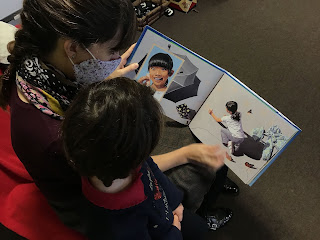Building mathematics

Simon writes: One of my students, A, has been with me for over a year now. He was just three years old when he started, and without much English. His favourite thing was to get the Playmobil cars out, fill them with people, and quietly act out stories with them on his own. He did lots of other things too. Here he is in the playground, back then in September 2020, with two other students, making a house with the giant Polydron: We've watched lots of Numberblocks (see my post on this ), where numbers are represented by blocks. I haven't asked anyone to do this - most of the things that happen in our pre-K (Early Years) classes are child-initiated and developed - but A has been spending a lot of time exploring numbers by building cuboids out of Polydron. While others were content to use our pre-existing interlocking cubes, A wanted to make the cubes himself from squares. He makes other things too, like this house with an interesting floor plan: But here's 8 (called 'Oct



